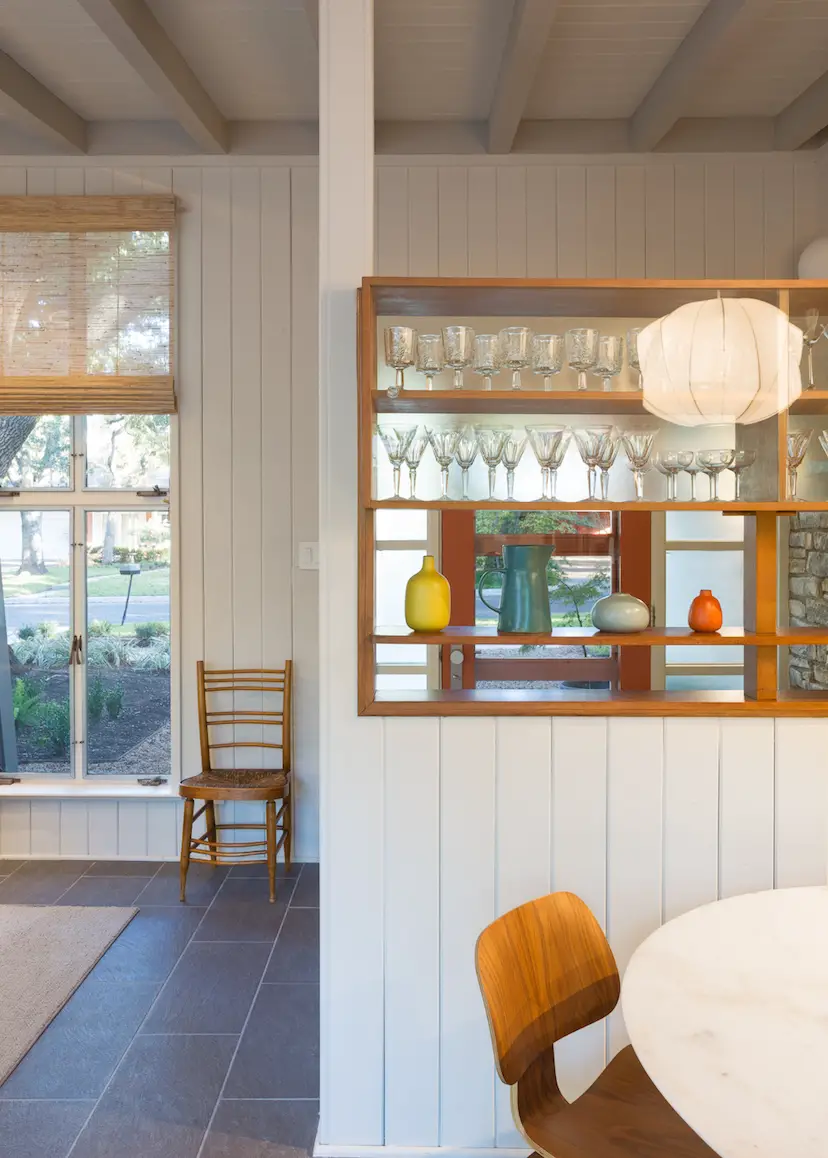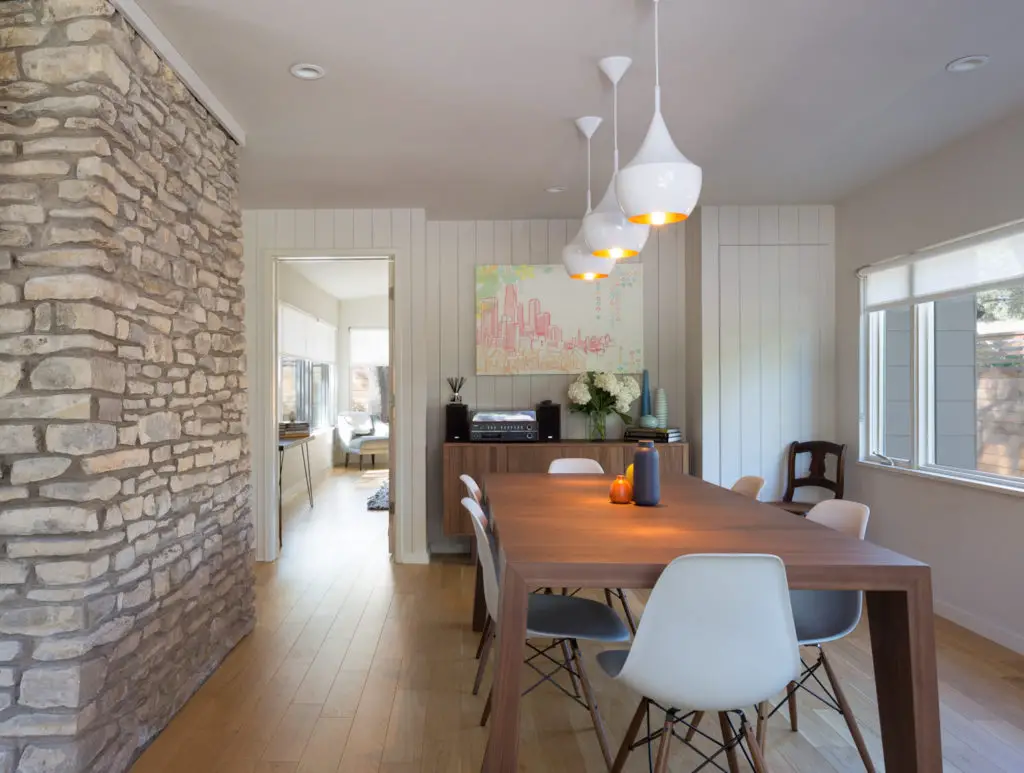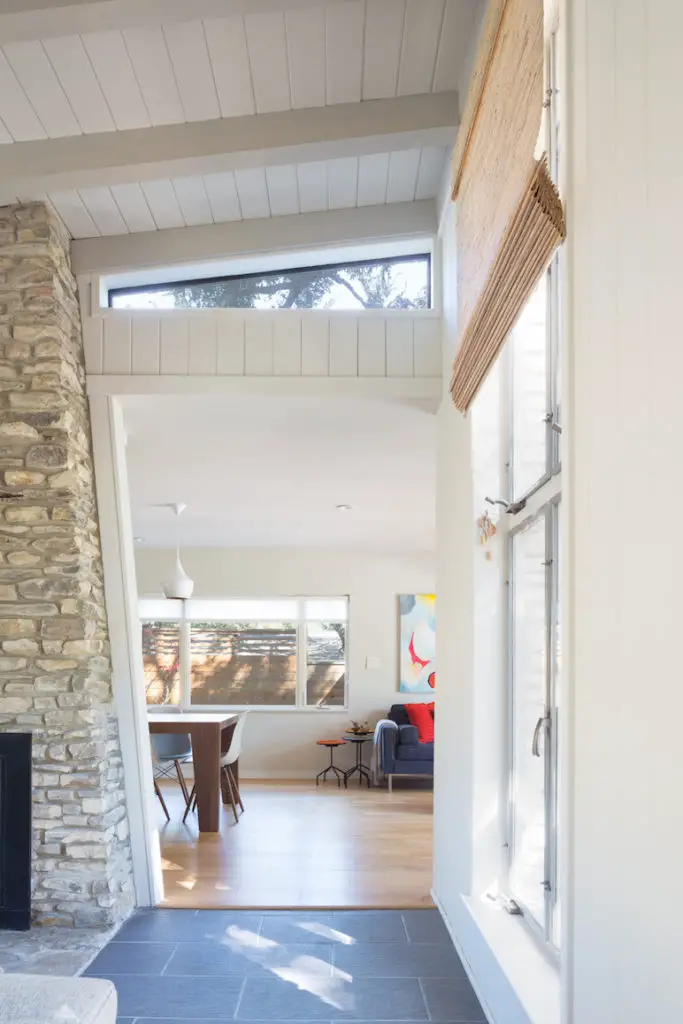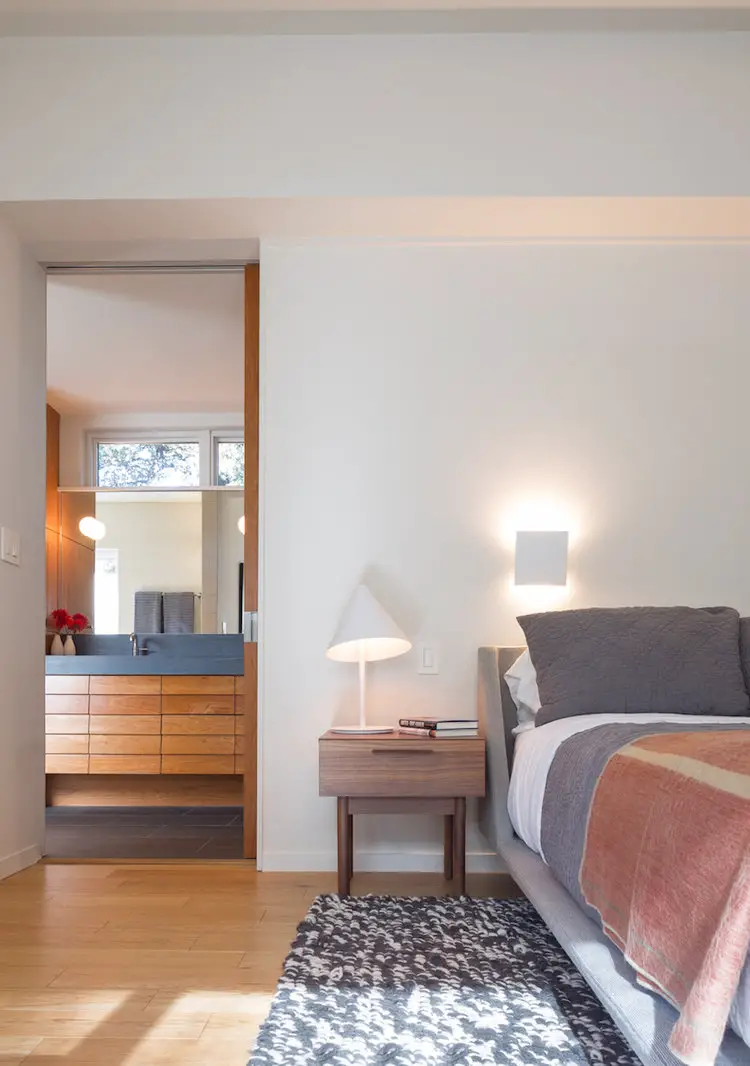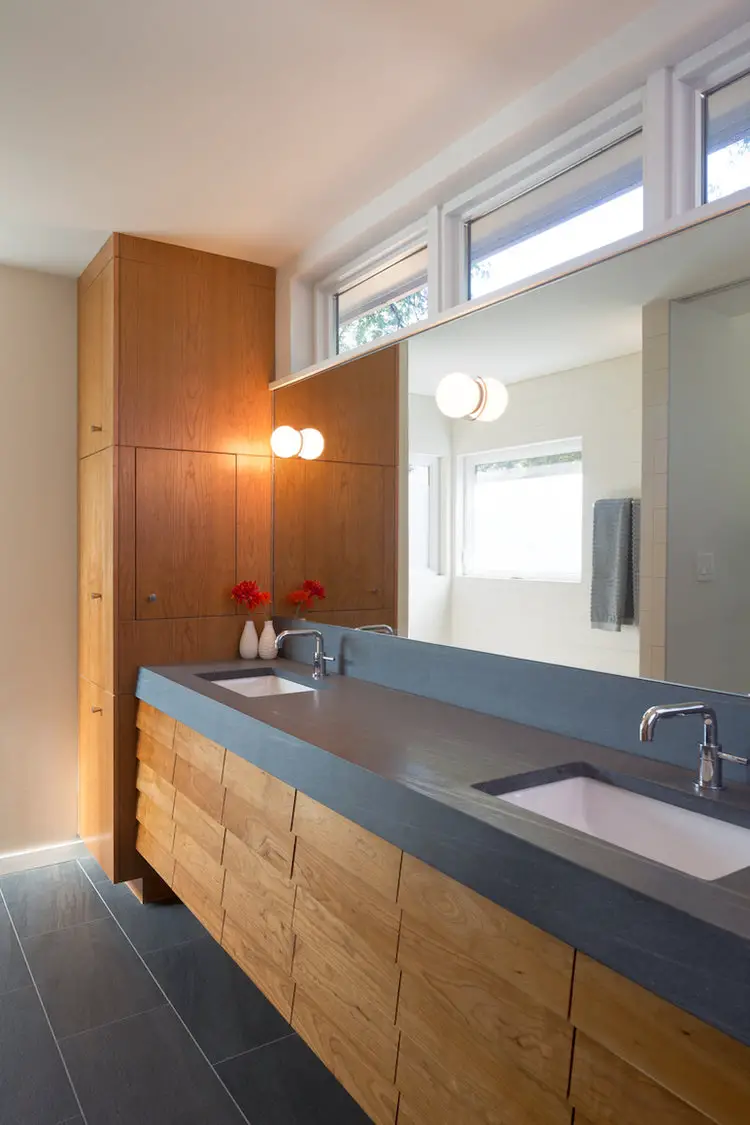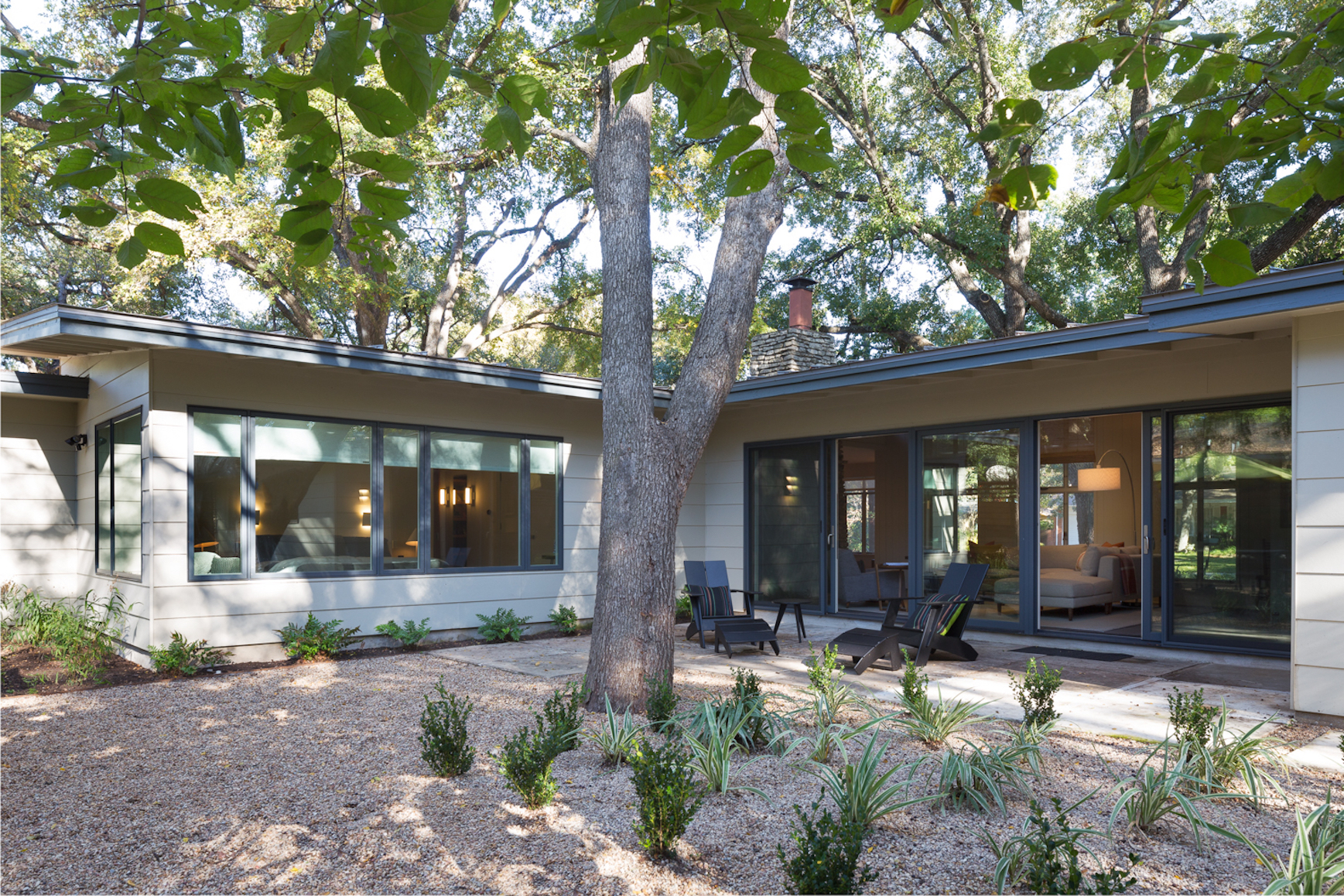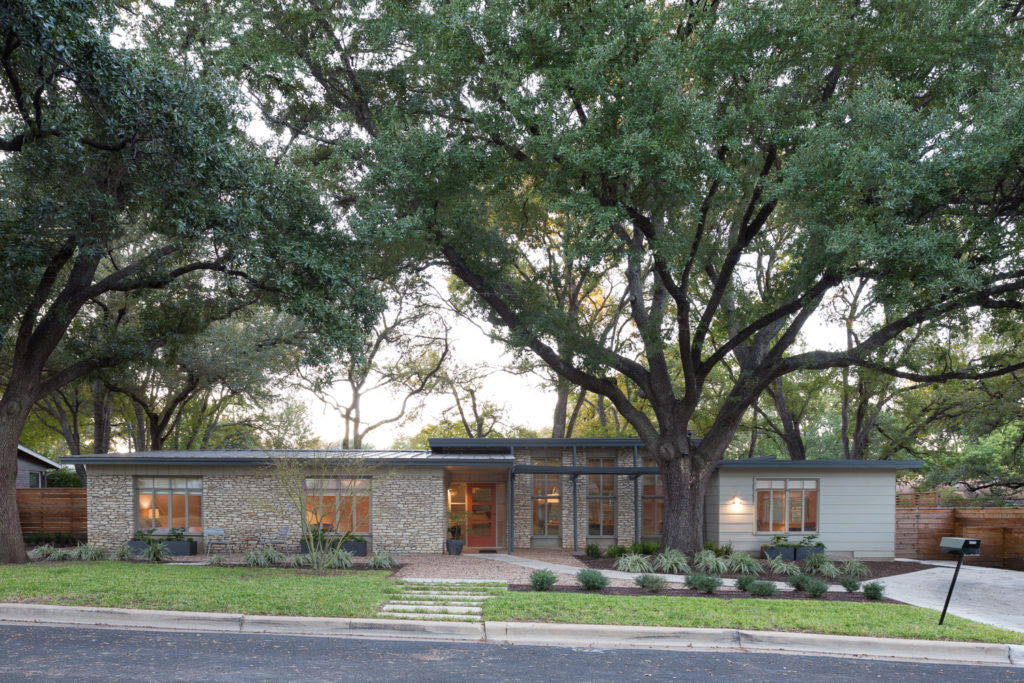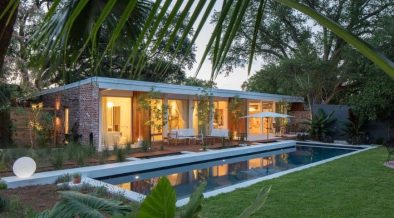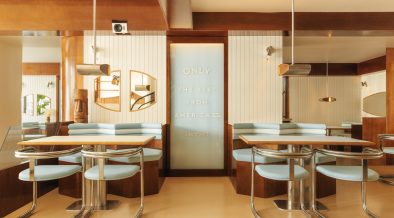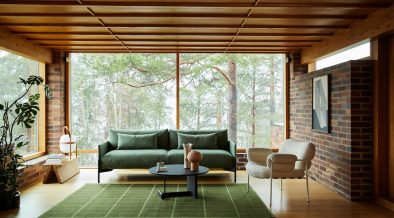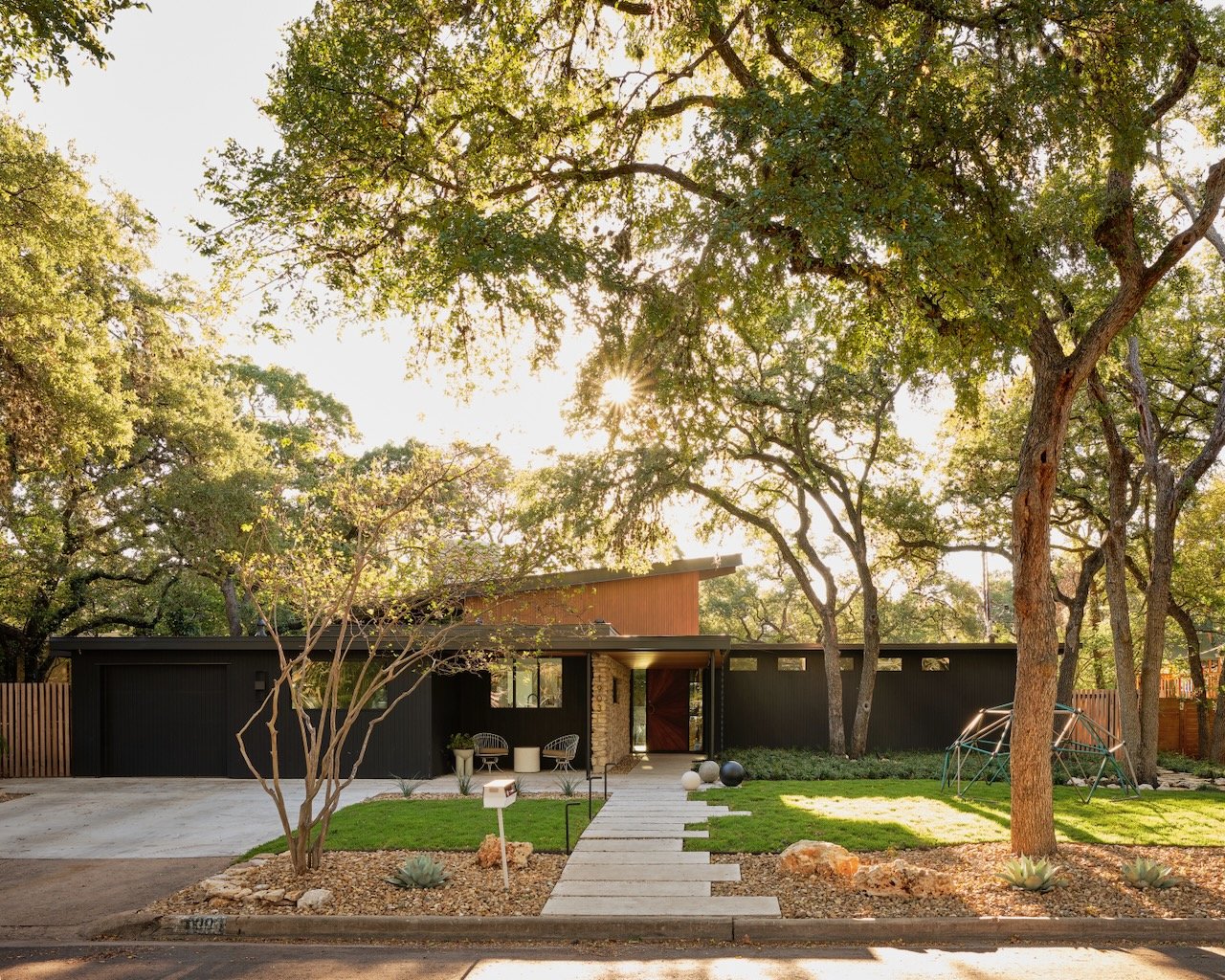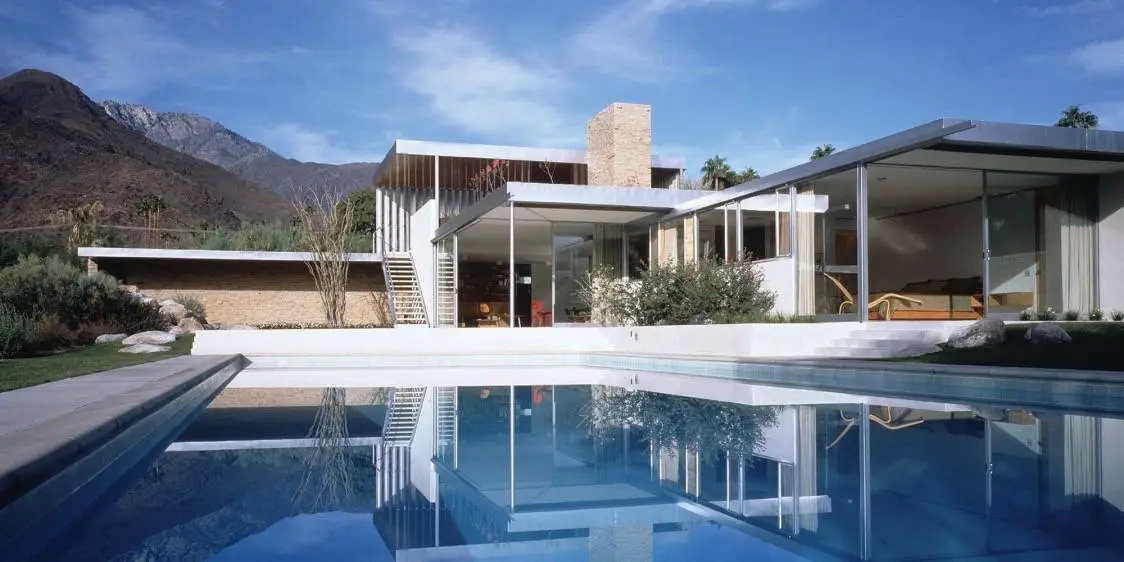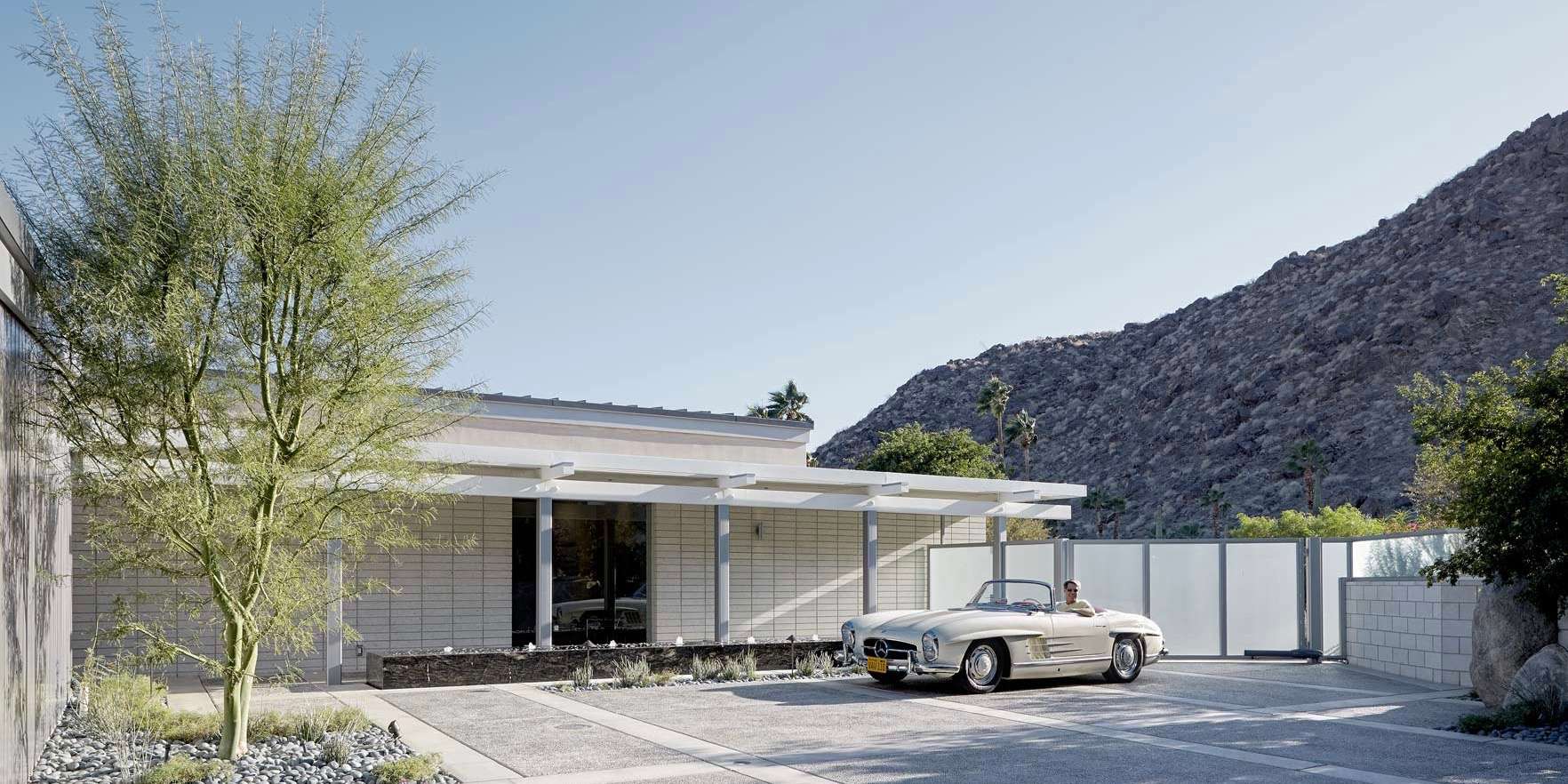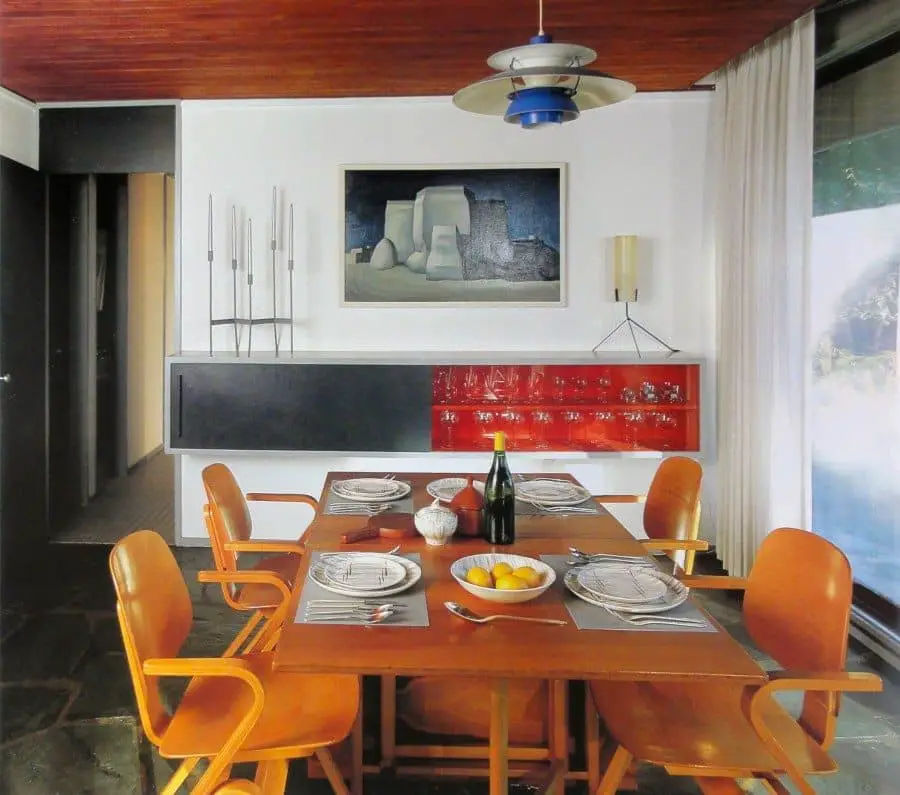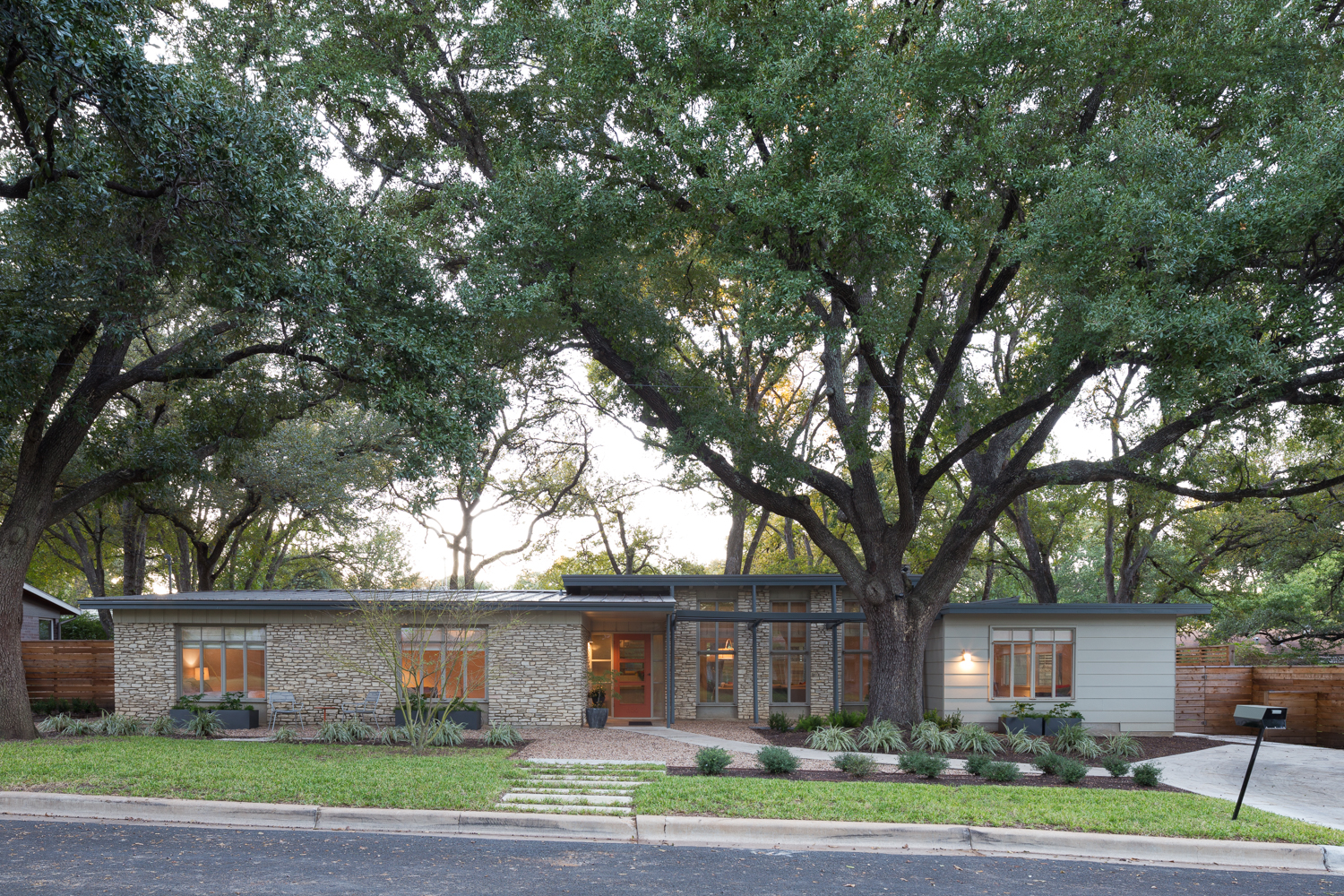
Tucked into the Zilker neighbourhood near Barton Springs, a 1956 mid-century home designed by Arthur Dallas Stenger has undergone a thoughtful renovation by Rick & Cindy Black Architects. Known as the Stenger 56 Project, this intervention respects the original spirit of the house while bringing it up to modern living standards.
“Our client purchased the house in 2009,” the architects explain. “It had remained mostly unchanged until then, aside from some minor updates. In 2015, she came to us to design a full renovation, plus a new master suite and dining area.”
Stenger homes are widely admired in Austin. “They’re relics of expressive craft,” says the studio. “Each one carries Stenger’s renegade approach—his inventive carpentry, the structural quirks. They’re instantly recognisable.”
The brief was clear: expand the home without overwhelming it. The team was asked to “establish a cohesive vision for the finishes and millwork that was built upon Stenger’s original ideas,” while also addressing functionality—like enclosing the carport to create a proper dining room, and adding a private master suite.
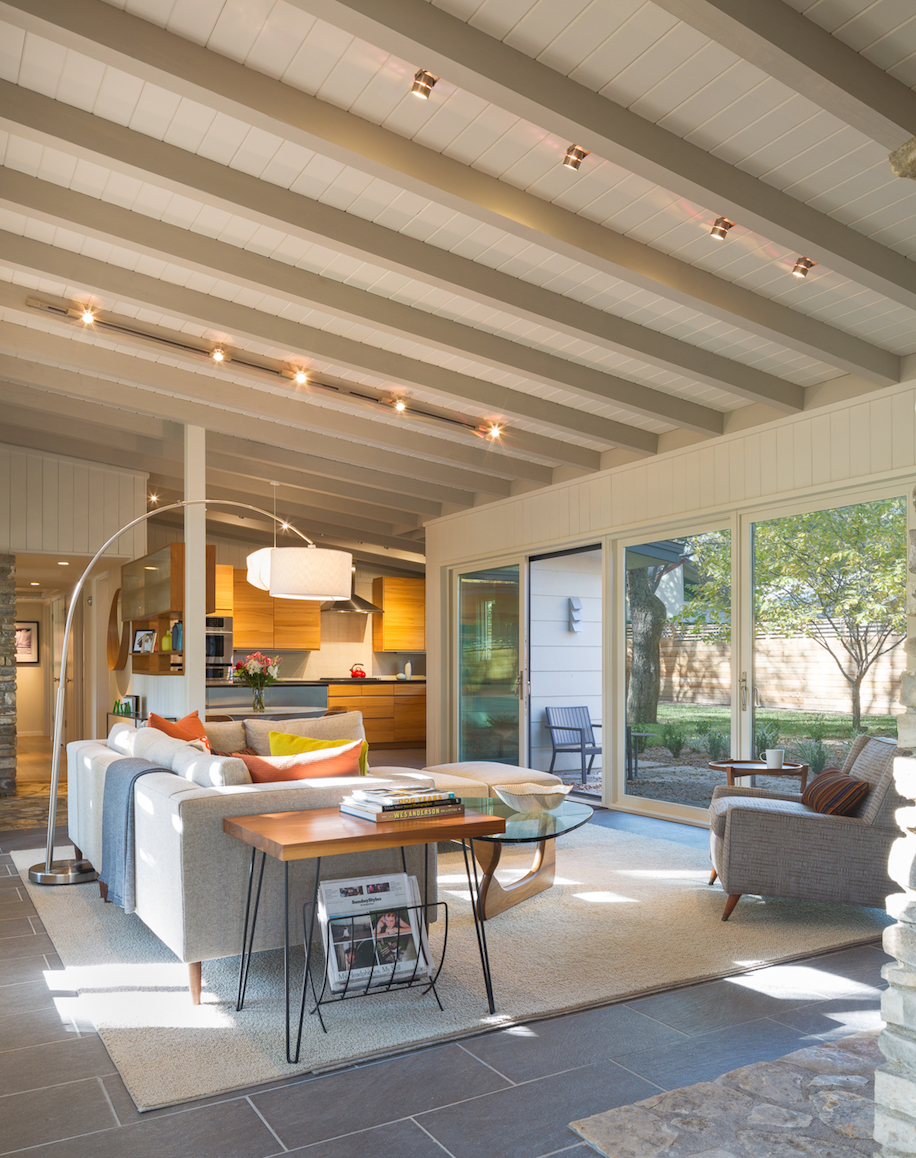
“It’s fun to work on a house with such good bones,” they note. The layout had a strong foundation: a simple rectilinear form, open-plan living areas cleverly divided by shelving, and bedrooms bathed in daylight from multiple exposures and clerestories.
Their solution respected the symmetry while improving flow. “We placed the new master suite on the opposite side of the house from the other bedrooms, giving it privacy and a stronger connection to the backyard,” they say. “To get there, you pass around the dramatic stone fireplace and through the new dining room—formerly the carport—now a bright, transitional space.”
Architectural features like the tapered fireplace, exposed rafters, and clerestory windows remain centre stage. But the detailing has been carefully refined. “Stenger built these cool slanted drawer fronts,” they recall. “We kept that look but improved the functionality with better drawer glides and built-in finger pulls. So they feel like originals but work like new.”
Material choices were restrained. “Natural stone and painted wood finishes complement the limestone fireplace and flagstone floors. It’s a quiet palette—mostly serene greys and whites—guided by the client’s eye for calm tones and ergonomic beauty.”
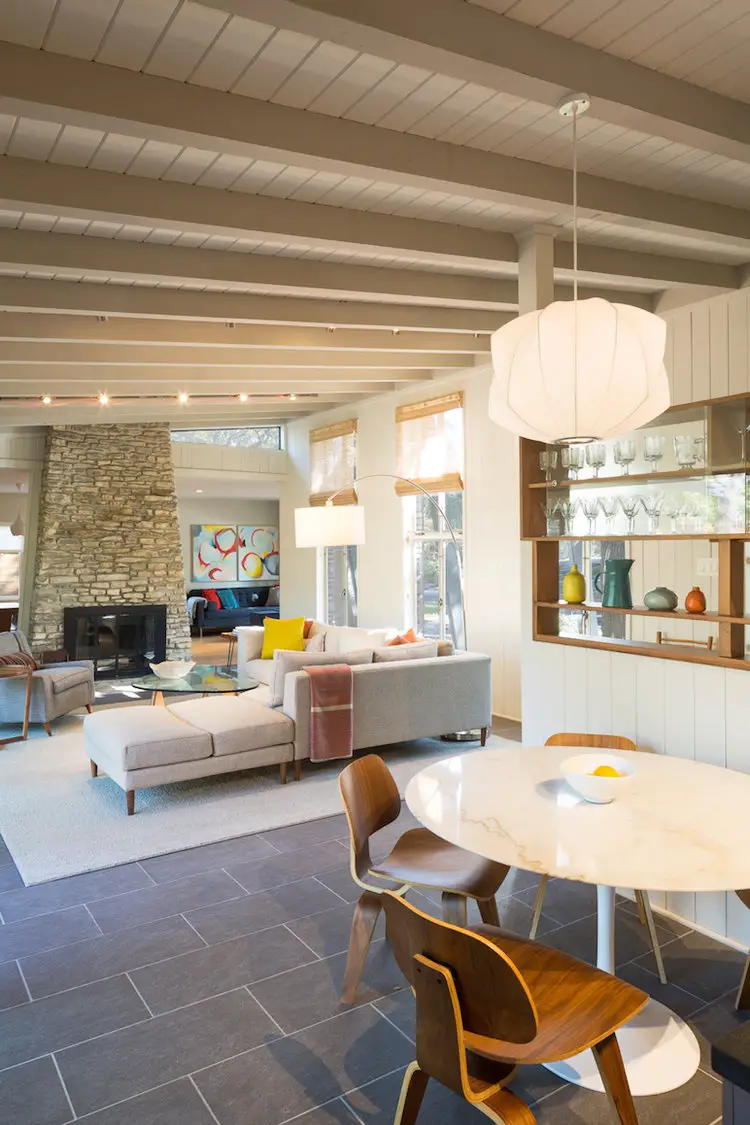
A notable success was the dining room’s facade. “We reused a steel casement window from the back of the house and reinstalled it at the front,” they explain. “It blends old and new in a seamless way. You can’t tell where the original house ends and the addition begins.”
The landscape was gently edited too. A new driveway reroutes attention away from the old carport entrance, reinforcing the new function of the space.
From the start, the team asked themselves: “What can be done to expand the feeling of space without becoming overscaled? What details can we invent that feel like they were always part of the house?”
Their client played a key role in the outcome. “She helped shape the colour palette and was very hands-on when it came to selecting fixtures. We spent hours researching lighting and taps that looked appropriate but felt satisfying to use.”
Mid-century ideals ran through the process. “Our favourite homes from that period make beautiful use of daylight—clerestories, skylights, and window walls that frame nature,” they say. “Back then, cabinetry was often built on-site. We took inspiration from those solid wood partition walls with integrated niches and shelving.”
The result is a renovation that feels both respectful and current. A home that remains unmistakably Stenger—just now, ready for another generation.
